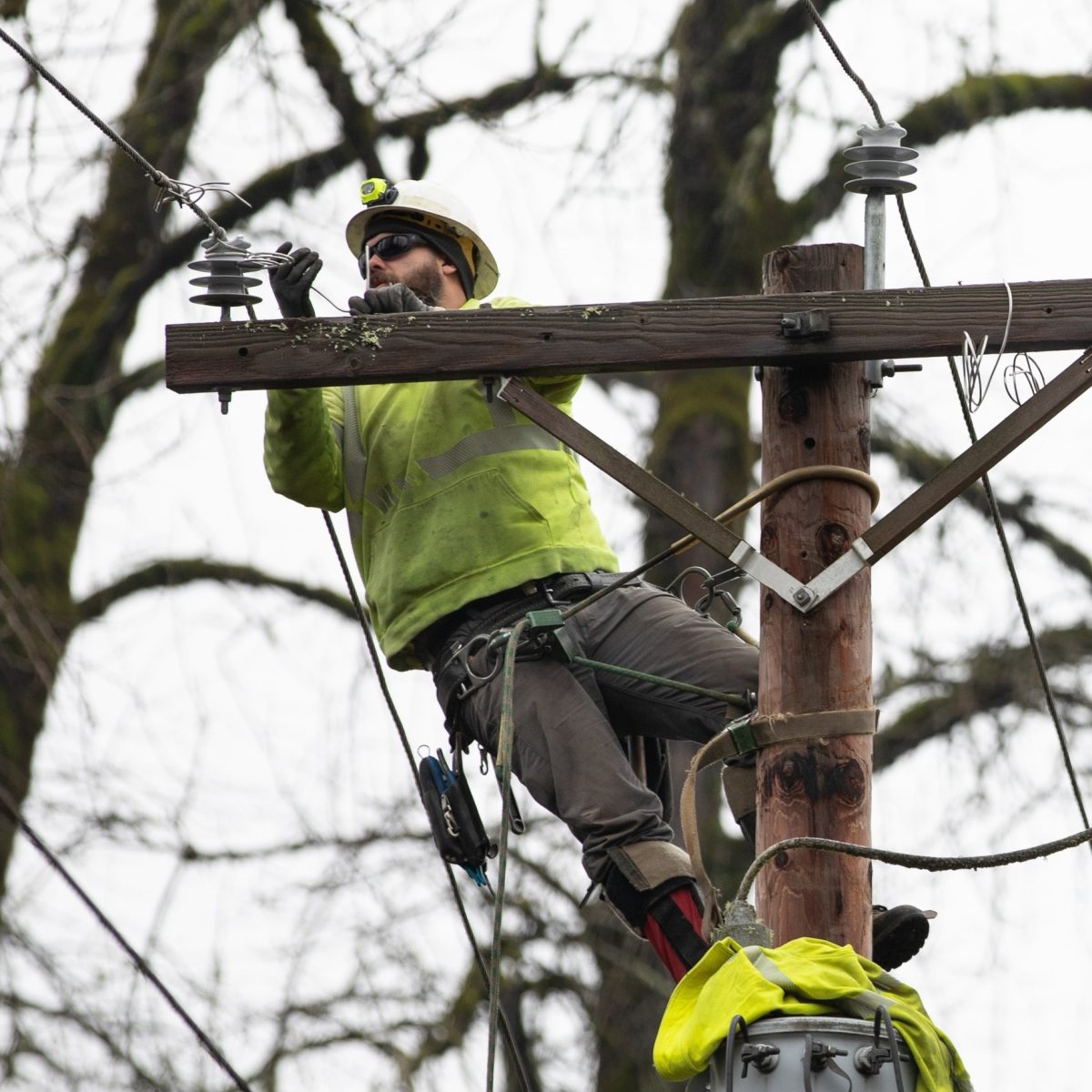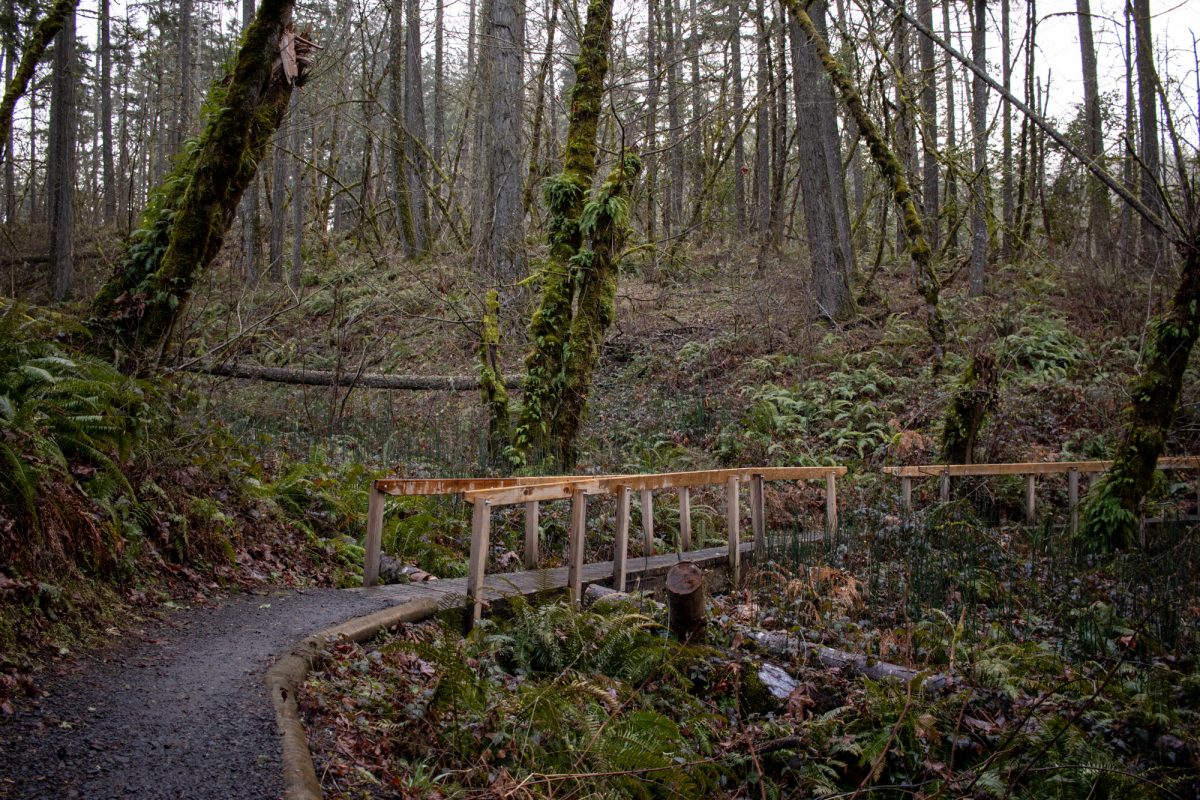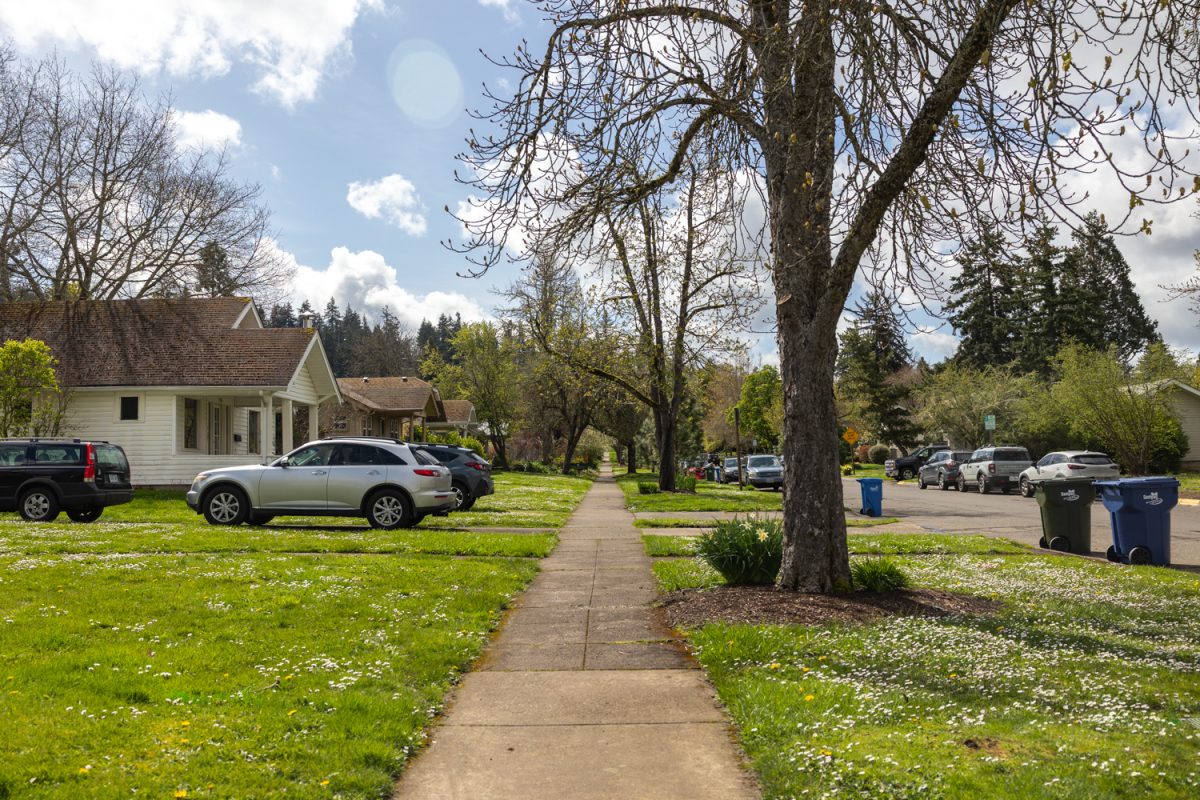The Oregon Office of Emergency Management issued a warning Oct. 26 urging residents to prepare for potential flooding, debris flows and landslides that may occur this winter due to intense summer wildfires impacting watersheds and soil. The warning came after a bomb cyclone hit the West Coast the weekend of Oct. 22, causing power outages and floods from Oregon to Southern California. Organizations like OEM and the University of Oregon say community members should be prepared with emergency kits and evacuation plans.
The University of Oregon campus is at a low-level risk for flooding due to the efforts Campus Planning and Facilities Management takes to manage leaf accumulation and maintain the integrity of roofs, gutters and downspouts, according to UO spokesperson Saul Hubbard. He said UO’s campus isn’t traditionally impacted by flood events, but the university still recommends students be prepared for emergencies of all types.
“Students should take an all-hazards approach when it comes to emergency preparedness versus focusing on one type of disaster or risk type,” Hubbard said.
He said the best things for students to do are to prepare an emergency kit that will last for at least a week, create an emergency plan and learn more about potential hazards in Eugene and what they can do to be prepared for them.
Andrew Phelps, director of Oregon OEM, told KVAL that fires have impacted a lot of the state, and, because of that, areas prone to seasonal flooding are at a greater risk due to landscape changes. Phelps said fire affected areas form a water repellant layer of charred soil and vegetation that can increase the risk of flooding.
“These weather systems as they come in from the Pacific can cause pretty significant damage and lead to flooding and landslides,” Phelps said. “These all can lead to road closures and utility outages.”
Areas that lost trees in the wildfires may also be hit harder by flooding. A publication from the Arbor Day Foundation found that trees can greatly reduce the amount of water rushing through areas after storms by intercepting the rainfall, sequestering the water within bark, leaves and roots and preventing soil erosion.
The foundation said, “a single tree may store 100 gallons or more, at least until it reaches saturation after about one to two inches of rainfall,” and “when trees are combined with other natural landscaping, studies have shown that as much as 65 percent of storm runoff can be reduced in residential developments.”
Similar to Hubbard, OEM recommends residents be informed about potential local disaster risks, build an emergency kit, create an emergency evacuation plan and have two weeks worth of supplies ready in case evacuation is necessary.
OEM makes emergency kits less of a hassle to create with resources like its “My Pocket Plan” booklet, which residents can print out and fill in with essential emergency information, such as insurance and medication information, evacuation plans and emergency contact numbers. The American Red Cross also has checklists for what should be included in a two week emergency bag — with items like food and water, flashlights, medications and first aid kits listed as essential in case of emergency.
Oregon Hazards Lab program director Leland O’Driscoll told KVAL that people now are preparing for multiple hazards at once between continuing to navigate a pandemic and needing to be ready for weather hazards like fires and floods.
“It’s hard to keep track of everything and be proactive,” O’Driscoll said. “It’s kind of having general preparedness for the hazards that are out there and doing what one can to be ready for whichever disaster strikes next.”
One of the easiest ways Oregonians can prepare for rainy weather is by signing up for OEM’s emergency alerts at oralert.gov to stay informed on potentially hazardous conditions.
Jessica Bolden / Daily Emerald
















